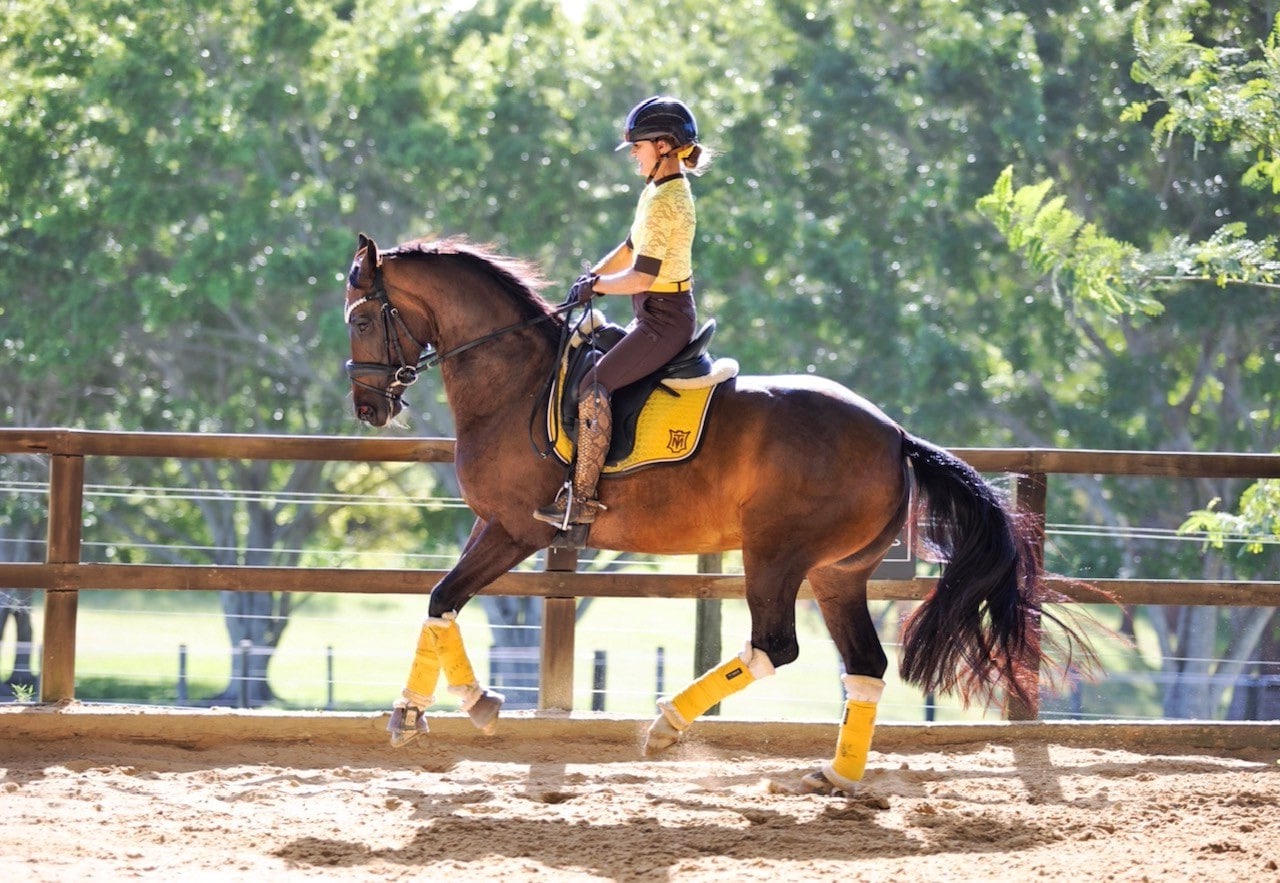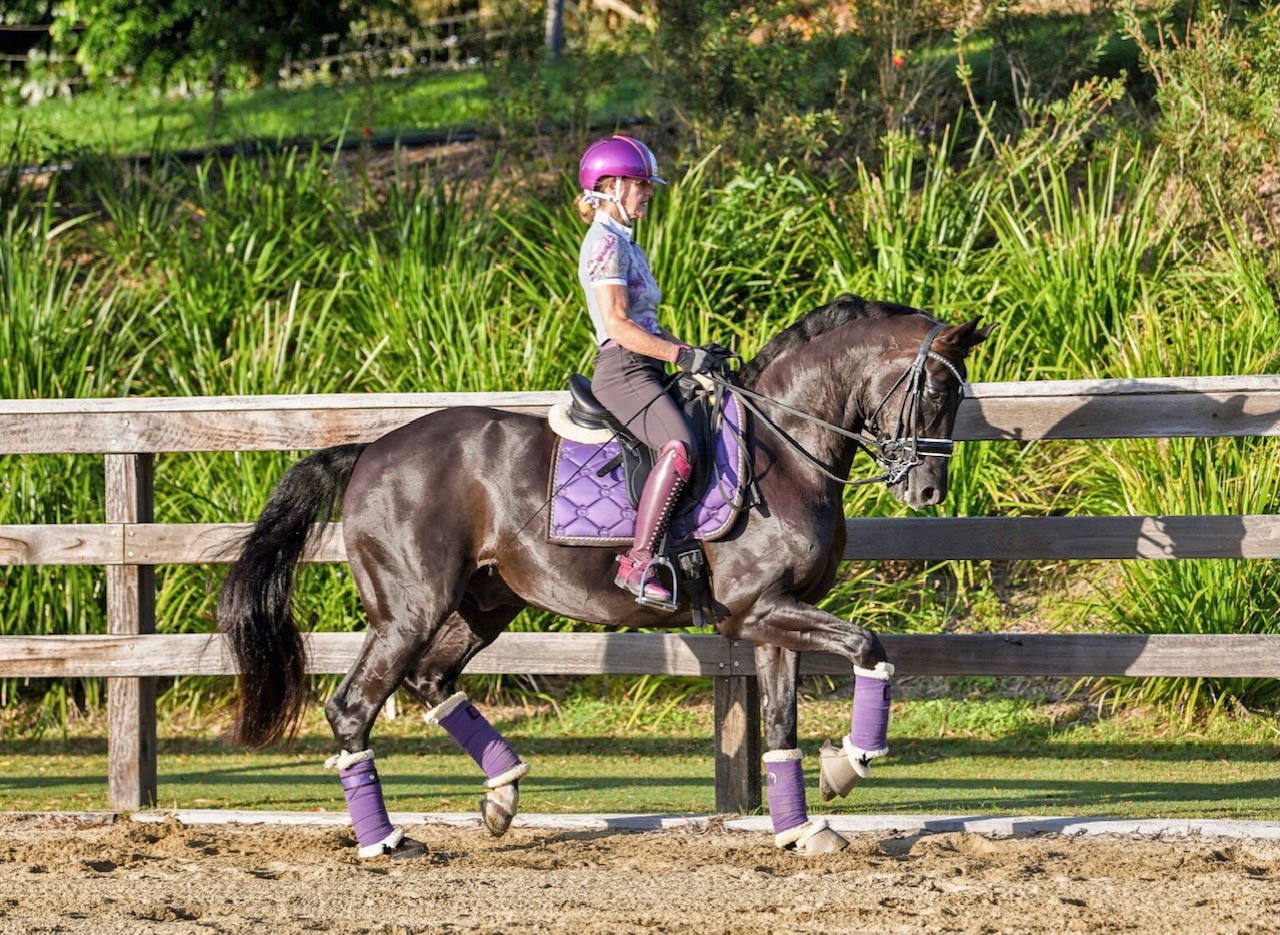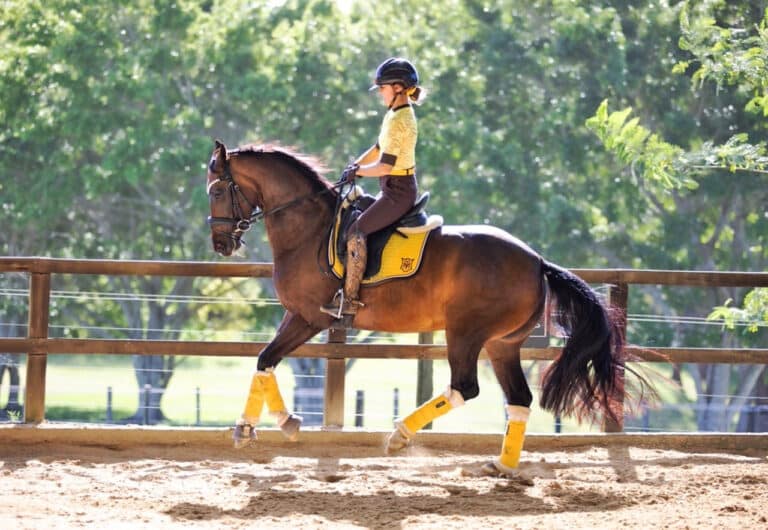More energy, more passion, more footwork
What does collection mean to you? It’s an important feature of training that NICOLE TOUGH believes needs to be properly understood.
Collection at the walk, trot and canter is the result of successfully training your horse through the first five steps of the Training Scale. There are many developmental stages of collection, and each stage requires tremendous effort from the horse. It’s the quality of collection that gives them the power and balance to perform the difficult dressage movements required at higher levels.
The increased strength needed for collection is a positive side effect of correct work with mindful training. It happens throughout the ride – not just with any exercise. Over time the layers of collection are established; beginning at elementary level, with the turn on the haunches in walk, shoulder-in and travers in trot, and simple changes in canter, all requiring more loading/compression of the hindleg ie: collection.

From here we should progress through the levels, based on the quality of the improved balance, strength and collection of the horse – not just because our horses can do the movements. Movement oriented riders tend to think that if their horse can do a flying change, they are a medium level dressage horse. Being ready for a level is not about the movements, but more about the ability of the rider to connect their horse and show three balanced gaits with the appropriate level of collection for the movements required at each level.
To feel the effect of collection, imagine walking, trotting and cantering over trot rails on the ground. The horse’s increased ground focus will lift the muscles of their chest, under-neck, withers and back, as they take more heightened steps to go over the rails. This is what collected gaits feel like.
Collection shows the development and increasing ability of the horse to lower and engage the haunches for the benefit of the lightness and mobility of the forehand, a shift in balance which improves their ease and carriage.
It’s all about the division of labour between the front and hind legs. In collection, there is more bending of the hindlegs during the phase of weight bearing and this provides propulsion. The long muscles beneath the skin on either side of the spine assist in the lifting action of the back, elevating the shoulders and withers, and allowing the forelimbs to control speed, turn the body, and assist in balance adjustments. The net effect of lowering the haunches and raising the withers is a more uphill inclination (collection). As the degree of collection increases through the levels and self-carriage improves, the back muscles are increasingly recruited to lighten the forehand.

When the horse isn’t strong enough to perform the movements in the required collection, they will find alternate ways to evade and compensate: becoming crooked, hollow, tight in the back, losing rhythm, leaning on the hand, tilting or nodding in the contact, and retracting their tongue to name a few. Why do they evade? Because it’s hard. We are asking them to lift and engage the muscles of the back, fold their haunches more under their centre of gravity, and take more weight behind. We can liken it to doing squats in the gym; the higher the level of collection, the deeper we squat.
To achieve collection, a complete understanding of the seat, leg and rein aids is required – both their independency and interaction. Of the three natural aids the seat is the most under-utilised, but is the most important in achieving collection. The seat aid encompasses the rider’s upper legs, pelvic girdle, trunk (abdomen and chest) and elbows. To collect the horse, these combine to channel energy upwards instead of forwards.
Without effective seat aids, riders use their reins to attempt collection, thereby blocking the back, interfering with the quality of the gait and confusing the horse. Ever tried to pedal a bike with the hand brake on? That’s what collecting a horse without the seat aids is like.
The seat, leg and rein aids each have a job to do and they also have to work together as a team. It is the seat aids’ job to shorten the steps, it is the leg aids’ job to create energy, and it is the rein aids’ job to manage the frame.
A few helpful exercises include:
- Going from walk to halt without the rein aids
- Mastering the half-halt in walk, trot and canter
- To achieve greater bending of the hocks and some heightened steps, from working trot use the seat aids to ask for smaller trot steps while at the same time tapping the horse lightly on top of the croup in time with the trot
- Count how many working canter steps down the long side between K and H, then try again, this time adding 2 to 3 more canter steps.
- Collect the canter to the speed of walk, and then ask for walk with the seat aids. Any trot step or change of weight in the hand means the horse used their head and neck to achieve the transition. Repeat the exercise with the aim of improvement.
Anyone wanting to transform themselves in the gym knows it takes time, dedication and discipline. The same goes for the dressage horse. There are no short cuts to Grand Prix – we have to take the steps.
The straightening effects of counter canter cannot be overestimated. If your horse continually swings their haunches to the inside, you can take them into counter canter, using your ‘outside leg’ to straighten the horse’s spine to be parallel with the long side. And an important tip: if your horse offers an unaided flying change, never flying change back. Always walk and return to the counter lead, even if you have to repeat this ten times. If you correct an unaided flying change with a flying change, you will create a problem – your horse will absolutely change again and will not hold counter canter.
With systematic counter canter schooling, your horse will be calmer in their flying change training, and there will be less room for error in dressage tests up to Grand Prix level.



